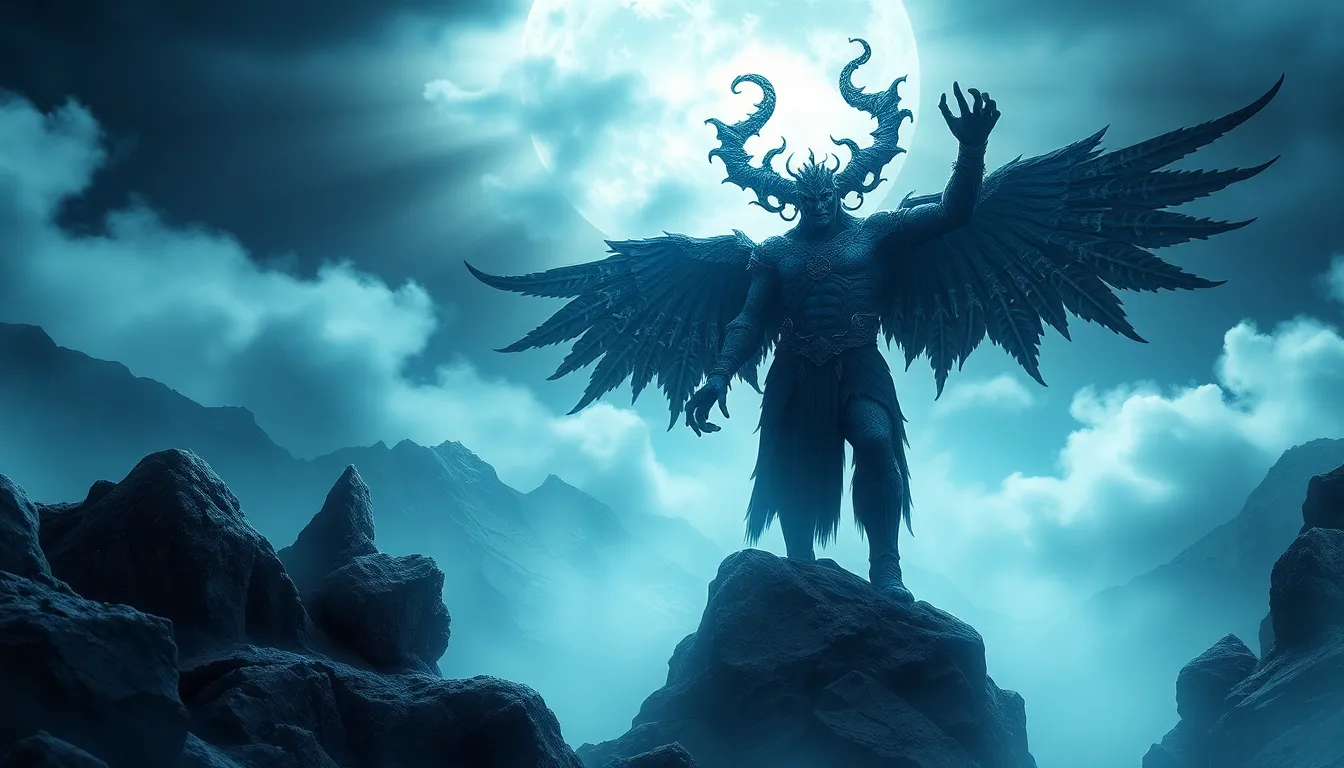The Myth of the Mountain Spirit: Guardians of the High Places
I. Introduction
Throughout history, mountains have been more than just towering formations of rock and earth; they have served as sacred spaces, sources of inspiration, and the dwelling places of spirits in various cultures around the world. The concept of mountain spirits is woven into the spiritual fabric of many societies, reflecting humanity’s deep connection to nature and its mysteries.
This article aims to explore the myths surrounding mountain spirits, examining their significance in human spirituality and folklore. By delving into historical contexts, cultural variations, and the symbolism behind these myths, we seek to understand the meanings they hold for communities across the globe.
II. Historical Context of Mountain Spirits
From ancient civilizations to modern societies, mountains have been revered as sacred entities. The historical context of mountain spirits reveals how early humans interpreted their surroundings and sought to explain the natural phenomena associated with these towering giants.
A. Ancient civilizations and their reverence for mountains
In many ancient cultures, mountains were seen as the abode of gods and spirits. Civilizations such as the Greeks worshipped mountain deities like Zeus, who was believed to reside on Mount Olympus. Similarly, the Incas viewed the Andes as sacred, believing that their mountains were the physical manifestations of their gods.
B. The role of mountain deities in early religions
Mountain deities often played integral roles in the religious practices of early societies. They were invoked for protection, guidance, and blessings, shaping the spiritual lives of communities. Rituals and offerings were common, aimed at appeasing these powerful spirits and ensuring harmony between the human and natural worlds.
C. Evolution of mountain spirit myths through the ages
As societies evolved, so did their myths surrounding mountain spirits. From the ancient reverence of nature to modern interpretations, these myths have adapted to reflect changing beliefs and values, yet they continue to symbolize humanity’s connection to the earth.
III. Cultural Variations of Mountain Spirits
The diversity of mountain spirit myths is vast, with each culture offering unique interpretations and stories. Here are some notable examples:
A. The Himalayas: Yeti and the Sherpa beliefs
In the Himalayas, the Yeti, often referred to as the “Abominable Snowman,” is a prominent figure in local folklore. Sherpas believe that the Yeti is a guardian spirit of the mountains, serving as both protector and harbinger of change.
B. North America: The Great Spirit and Native American traditions
In many Native American cultures, the Great Spirit is a universal force that encompasses all aspects of existence, including the mountains. These sacred spaces are often viewed as places of power and connection to the divine.
C. European folklore: The Alpine spirits and their guardianship
In Europe, particularly in the Alps, spirits known as “Alp” or “Alptraum” are believed to inhabit the mountains. These spirits are often seen as protectors, but can also be mischievous, reflecting the duality of nature.
D. South American mountains: The Inca and Pachamama
The Incas revered the mountains as sacred, with Pachamama, or Mother Earth, embodying the spirit of the land. They believed that mountains were not just physical entities but living beings that required respect and offerings.
IV. Symbolism Behind Mountain Spirits
Mountains and their associated spirits carry deep symbolism that resonates across cultures.
A. Mountains as symbols of strength and stability
Mountains are often seen as symbols of strength, endurance, and stability. Their towering presence provides a sense of safety and permanence in an ever-changing world.
B. The duality of mountain spirits: protectors vs. punishing forces
Mountain spirits embody a duality; they can act as protectors of the land, ensuring balance and harmony, or as punishing forces when disrespected. This duality reflects the complexities of nature itself.
C. The interplay of nature and spirituality in mountain mythologies
The myths surrounding mountain spirits highlight the intricate relationship between nature and spirituality, showcasing how cultures interpret and interact with the natural world.
V. The Role of Mountain Spirits in Local Communities
Mountain spirits play a significant role in the cultural practices of local communities, influencing rituals and traditions.
A. Community rituals and festivals honoring mountain spirits
Many communities celebrate festivals that honor mountain spirits, incorporating music, dance, and offerings to express gratitude and seek blessings.
B. Stories of mountain spirits as guardians of the land
Local folklore often includes stories of mountain spirits acting as guardians, protecting the land and its inhabitants from harm. These narratives reinforce the bond between humans and the natural world.
C. The impact of mountain spirits on local customs and traditions
The beliefs surrounding mountain spirits influence various customs, from agricultural practices to seasonal celebrations, showcasing the integration of spiritual beliefs into daily life.
VI. Modern Interpretations of Mountain Spirit Myths
In contemporary society, mountain spirit myths continue to resonate, influencing various aspects of culture.
A. Influence of mountain spirit myths in contemporary literature and art
Mountain spirits frequently appear in literature and art, serving as symbols of inspiration, mystery, and the sublime. Artists and writers draw upon these myths to explore themes of nature and spirituality.
B. The rise of eco-spirituality and mountain conservation efforts
As environmental awareness grows, many people are turning to eco-spirituality, viewing mountains not only as physical spaces but as sacred entities that require protection and reverence.
C. How modern society perceives and interacts with mountain myths
In a rapidly changing world, mountain myths are often romanticized, leading to a blend of traditional beliefs and modern interpretations, which can sometimes dilute their original meanings.
VII. Psychological and Emotional Aspects of Believing in Mountain Spirits
The belief in mountain spirits can provide psychological and emotional benefits, fostering a sense of connection to nature.
A. The role of myth in human psychology and coping mechanisms
Myths serve as coping mechanisms, helping individuals make sense of their experiences and emotions. The belief in mountain spirits can offer comfort and solace in times of hardship.
B. Connection to nature: How mountain spirits foster a sense of belonging
Believing in mountain spirits fosters a deep sense of belonging to the natural world, encouraging individuals to recognize their place within the ecosystem.
C. The therapeutic effects of mountains and their spiritual associations
Mountains are often associated with therapeutic effects, providing spaces for reflection, healing, and spiritual rejuvenation, further enhancing the significance of mountain spirits.
VIII. Critiques and Misinterpretations of Mountain Spirit Myths
As with any cultural narrative, mountain spirit myths are subject to critiques and misinterpretations.
A. Cultural appropriation and the misrepresentation of mountain spirits
In recent years, the commercialization and appropriation of mountain spirit myths have raised concerns about their authenticity and respect for cultural traditions.
B. The dangers of romanticizing nature and its spiritual guardians
Romanticizing mountain spirits can lead to a disconnect from the realities of nature, overshadowing the importance of conservation and respect for the environment.
C. Debunking myths: Scientific perspectives on mountain phenomena
Scientific explanations for mountain phenomena can sometimes challenge traditional beliefs, leading to debates about the validity and relevance of mountain spirit myths in a modern context.
IX. The Future of Mountain Spirit Myths
The future of mountain spirit myths is uncertain, influenced by global changes and environmental challenges.
A. Preservation of mountain spirit traditions in a globalized world
As




